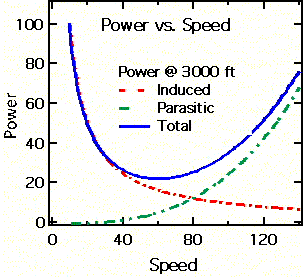Not by my understanding of the definition of "backside of the power curve" which is illustrated nicely here:

That's flying the PLANE on the back side, not the approach, the same principle applies. When you can reduce power and still maintain your desired vertical track, you are on the frontside of the power curve, you have excess energy. When you have to add power to maintain your desired vertical path, you are on the backside, you have bare minimum with the engine included. The adjustment lies in that the graph is keyed to level flight and the approach to a descending glide slope.
Last edited:

 "That dude is just a bit behind the power curve."
"That dude is just a bit behind the power curve." And going from the front side to the back side of the power curve would not change that at all.
And going from the front side to the back side of the power curve would not change that at all. Thanks for simplifying as well as demonstrating why that's an important concept.
Thanks for simplifying as well as demonstrating why that's an important concept.
 No. Since we're talking about a stabilized approach, we're talking constant airspeed, so it doesn't matter which side of the power curve it's on. Regardless of front or back side, if you add drag while maintaining speed, your descent rate will increase, just as it will for a powered aircraft if you reduce power without changing speed regardless of front or back side of the power curve.
No. Since we're talking about a stabilized approach, we're talking constant airspeed, so it doesn't matter which side of the power curve it's on. Regardless of front or back side, if you add drag while maintaining speed, your descent rate will increase, just as it will for a powered aircraft if you reduce power without changing speed regardless of front or back side of the power curve.